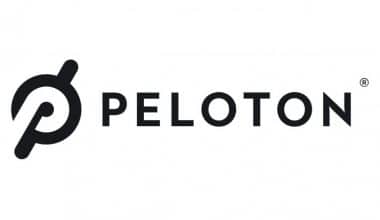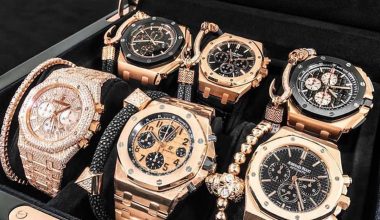Volkswagen was founded several decades ago in 1937, and it is still standing strong, despite the many challenges it has faced. The same is true for its logo. The famous VW logo is always changing to show how unique the brand is. Many parts of the classic Volkswagen badge have stayed the same over the years, which shows how tough the brand is. We’ll take a tour through the meaning, history, and elements of the Volkswagen logo, such as the colors and font, including the best car models that the brand has produced.
Overview and Meaning Of The Volkswagen Logo
Today’s Volkswagen logo is a simple but eye-catching mark that features the letters “V” and “W” in a clean, sleek circle. This current Volkswagen logo is based on a variety of similar images used by the company over the years.
Though the Volkswagen automobile emblem can appear in a variety of colors depending on the nature of the marketing or branding effort in issue, it commonly appears in blue and white. White and blue usually depict purity, strength, vision, and dependability.
Unsurprisingly, the Volkswagen symbol is based on the company’s name, which translates from German to “people’s automobile.”
What Does The VW Logo Mean?
The Volkswagen logo consists of two letters: “V” for “Volks,” which translates to “people,” and “W” for “Wagen,” which translates to “vehicle.” To symbolize the principles of community and inclusion, the letters enclose in a circle.
Volkswagen was formed in 1937 by the German Labor Front with the help of Ferdinand Porsche (the man behind the Porsche brand).
The brand was inspired by Adolf Hitler’s desire to build a superhighway and make automobiles more affordable to the masses.
When Hitler visited a Berlin vehicle show in 1933, he got the concept for Volkswagen. Following his ascension to the throne of Germany, Adolf invited Ferdinand Porsche to begin manufacturing “people’s vehicles.”
The first car, the Volkswagen Beetle, was inspired by a sketch in a French magazine. Volkswagen is now one of the world’s largest vehicle corporations, famed for producing an infinite number of cars worldwide.
History And Evolution Of The Volkswagen Logo
Volkswagen, like many corporations with decades of industrial history, has had a variety of symbols around the world. Many of the older Volkswagen emblems are similar to the ones we know today, although there have been some substantial modifications over time.
1937
The original Volkswagen insignia was significantly more intricate than the image we know today. The letters “V” and “W” were still visible, one above the other in a circular frame.
There were, however, several components surrounding the circle that represented a cogwheel and a form of the Swastika emblem.
1939
The removal of Nazi iconography from the former Volkswagen design in 1939 was the first major update to the logo. The cogwheel components, as well as the central writing in the circle, remained. The new Volkswagen logo conveys a masculine, practical, and aggressive image.
1945
The original Volkswagen emblem was updated again in 1945, this time with more color and joy. The image took on a nostalgic feel, with gentle cream and brown colors contrasting with the passionate brightness of red.
The cogwheel design was dropped, but the central insignia was kept.
1960
Volkswagen streamlined its image once again in 1960. It presented a symbol that is extremely similar to the one used by the corporation today. The square surrounding the circular insignia was meant to represent stability as the company expanded into bigger international markets.
The monochrome hue of the Volkswagen emblem was intended to convey the brand’s overall stability and power.
1967
In the following seven years, the square vanished, and the traditional Volkswagen emblem circle reappeared. This new logo was similar to the one used in 1945. The minimalist design, on the other hand, incorporated a color shift to blue and white.
The company experimented with another variation of the blue and white logo in 1978, this time using a bolder and brighter shade of blue.
The logo was also tweaked slightly to double the framing around the letters. In this form, the “V” from the distinctive VW sign appeared to be a little smaller as well.
The Volkswagen emblem was modified again in 1989, this time to a much lighter version of the blue and white color. The logo’s proportions were altered significantly to make it appear cleaner and more attractive.
2000
The Volkswagen logo change continued in 2000, as the firm sought a more modern image. Volkswagen’s changes included a lot of gradient use to make the symbol appear more three-dimensional.
The palette’s white coloring was given a silver tone, while the blue became deeper and a little darker than before.
Another variation of this logo was introduced in 2012, emphasizing the 3D impression. The size of the logo was reduced slightly, while the letter lines were sharpened and bolder.
The overall impression was one of modernism and development.
2019
Volkswagen chose to remove all 3D elements from its emblem in 2019. The image developed still again, becoming much sleeker and slimmer. The new Volkswagen logo was designed to commemorate the company’s new line of electronic vehicles.
This two-dimensional design is delightfully attractive, simple, classy, and a little futuristic – ideal for a new era of Volkswagen automobiles.
The Significance of the Volkswagen Logo
Though there have been several Volkswagen emblems over the years, the picture has always retained a few key components. The Volkswagen logo has always contained the famous letters “V” for people and “W” for cars, which are derived from the company’s name.
The circle border around the monogram is a key aspect of this logo’s meaning. In logo design, circles frequently represent community and inclusivity, as well as worldwide progress.
Today’s branding is straightforward and much more modern, akin to many of the minimalist logos made by major technology corporations and other car companies.
Although the image resembles the version from the 1960s in many aspects, the circle and the “VW” symbol are much thinner, and the bottom of the “W” is totally detached from the circle for the first time.
Colors of the Volkswagen Logo
The colors of the Volkswagen logo have changed a few times over the years. However, the majority of the time, the corporation has used either black and white or white and blue.
The Volkswagen Logo Font
The Volkswagen logo font is a proprietary sans-serif typeface. Unlike other car brands, the name “Volkswagen” is not inscribed alongside the logo. However, the letters “W” and “V” have always been associated with the brand.
The letter “V” is smaller than the letter “W,” possibly to signify that people have a greater impact on the firm than anything else.
About the Volkswagen Brand
Volkswagen (VW) is a German automobile manufacturer that was founded in 1937. VW, is one of the world’s top automobile manufacturers, with an annual production output of 12 million units, resulting in a yearly revenue of around 150 billion euros. Seat and Skoda are among its brands.
It also owns the exotic Audi, Bentley, Porsche, Bugatti, Ducati, and Lamborghini subsidiaries. As a global firm, it employs approximately 650,000 people and competes with the following major brands.
The Best Volkswagen Cars and SUVs
#1. Volkswagen Golf R 2022
The Volkswagen Golf R is the best hot hatch in Europe. It has 315 horsepower and all-wheel-drive traction in a small chassis that grips and handles very well. The Volkswagen Golf R is a 5-seater with only one trim level. The DSG, which starts at $45,985 and comes with a 2.0L I4 Turbo engine and All Wheel Drive, is the most popular style.
Pros
- Quick, nimble, and enjoyable to drive
- All-wheel drive is standard.
- Large cargo space
Cons
- Infotainment, air control, and lighting are all controlled using quirky touch controls.
- Manual-transmission variants do not have emergency driver assistance.
- With a dual-clutch automatic transmission, the price rises to $45K.
#2. Volkswagen Golf GTI 2023
Since 1975, the Volkswagen Golf GTI has been a motoring legend, and while today’s GTI includes features such as LED lights and a digital gauge cluster, the essential recipe hasn’t altered. A powerful engine, manual transmission, and the agility of a sports vehicle lay beneath the practicality and vintage plaid upholstery. Volkswagen keeps innovating, most notably with the addition of Vehicle Dynamics Manager, an in-car program that allows owners to tailor the GTI to their driving tastes. The Volkswagen Golf GTI is a 5-seater with three trim options. The 2.0T SE DSG, which starts at $36,875 and comes with a 2.0L I4 Turbo engine and Front Wheel Drive, is the most popular style.
Pros
Elegant and contemporary. Variable driving dynamics It has the feel and performance of a more costly vehicle. Gas-saving and convenient.
Cons
The top trim costs over $40,000. The back seat is small. There is no hybrid/EV available.
The 2023 Volkswagen Golf GTI is one of the most fun cars under $30,000. It is quick in acceleration, braking, and handling. It’s also highly practical, with a spacious interior, heated seats as standard, Apple CarPlay, and impressive cargo space. These features make the GTI a favorite among car aficionados. Some competitors are faster, but few can equal the GTI’s usability and German elegance.
#3. Volkswagen Passat 2022
The Volkswagen Passat is a classic family sedan with a big cabin, a smooth ride, and lots of trunk space. Although certain aspects of the interior design feel outmoded, it’s still a capable sedan worth considering. The Volkswagen Passat is a 5-seater with three trim options. The 2.0T Limited Edition, which starts at $31,570 and comes with a 2.0L I4 Turbo engine and Front Wheel Drive, is the most popular style. This Passat is expected to get 24 MPG in town and 36 MPG on the interstate.
Pros
- Large rear seat
- Simple-to-use infotainment system
- A large trunk
Cons
- Comparable vehicles have more luxurious interiors.
- There is only one engine option.
With SUVs dominating the family fleet, big sedans have a secondary market. However, cost and greater handling are two compelling reasons to buy a sedan. Due to German engineering and design aesthetics, the Volkswagen Passat has been a solid seller for five decades. However, the sector has long been dominated by popular Japanese manufacturers Honda and Toyota. Volkswagen has decided to eliminate its largest passenger car; the Passat will be discontinued in 2022.
Buyers can select from the Passat SE base model, the sporty Passat R-Line, or the specially packaged 2022 Passat Limited Edition, which is limited to 1,973 copies. That figure is based on the start of production at the Volkswagen facility in Chattanooga, Tennessee.
#4. Volkswagen Taos 2023
The 2023 Volkswagen Taos, Volkswagen’s smallest SUV, features the technology, elegance, and attitude that buyers desire in a modern car. The Taos is quiet and sophisticated, with nearly as much space as the larger Tiguan, but it isn’t as sporty as its top competitors. The Volkswagen Taos is a 5-seater with three trim options. The SE FWD, which starts at $30,220 and comes with a 1.5L I4 Turbo engine and Front Wheel Drive, is the most popular type. This Taos is expected to get 28 MPG in town and 36 MPG on the highway.
Pros
Very spacious for a little SUV. Vehicle-like fuel economy. The cabin materials are impressive.
Cons
There is no hybrid option. Rivals are more enjoyable to drive.
With its angular appearance and high-tech interfaces, the 2023 Volkswagen Taos stands out in a competitive market of subcompact SUVs. High-end cabin materials elevate the Taos, while standard safety technology and selectable AWD make it a wise choice as the seasons change.
#5. Volkswagen Jetta 2023
The capacious and fuel-efficient Volkswagen Jetta stands out in the small-car market, providing an exciting European driving experience with a good ride and handling balance, snappy steering, and a quiet cabin. Overall, it’s a good buy. The Volkswagen Jetta is a 5-seater with five trim levels. The SE Automatic, which starts at $25,240 and comes with a 1.5L I4 Turbo engine and Front Wheel Drive, is the most popular type. This Jetta is expected to get 29 MPG in town and 40 MPG on the interstate.
Pros
- Extensive driving experience
- For its class, it has a spacious interior and a large trunk.
- The GLI is a lot of fun to drive.
Cons
- Key competitors have more standard driver-assist systems and offer higher overall safety ratings.
- Some of the inside trim appears to be low-quality.
With the discontinuation of the Passat, Volkswagen’s sedan inventory is reduced to two models: the tiny Jetta and the bigger Arteon. For many years, the Jetta has been VW’s best-selling sedan, and it remains a standout as it competes with popular rivals such as the Toyota Corolla, Honda Civic, Nissan Sentra, Mazda3, and Hyundai Elantra. The style of the Jetta is conservative. It’s stylish but subtle, belying its quick acceleration and agile handling. It’s also available with a manual transmission, which is becoming increasingly rare. The cabin and trunk of the Jetta are both quite roomy. Even our tallest editors found themselves at ease behind the wheel and in the backseat. With 228 horsepower, the top-of-the-line Jetta GLI remains a favorite among compact performance sedans such as the Honda Civic Si, Hyundai Elantra N Line, and Subaru WRX.
#6. Volkswagen Atlas Cross Sport 2023
The Volkswagen Atlas Cross Sport is a 5-seater SUV with five trim options. The 3.6L V6 SE with Technology 4MOTION, which starts at $43,025 and comes with a 3.6L V6 engine and All Wheel Drive, is the most popular style. This Atlas Cross Sport is expected to get 18 miles per gallon in the city and 24 miles per gallon on the highway.
#7. Volkswagen Arteon 2023
The Volkswagen Arteon is a 5-seater with three trim options. The SEL R-Line 4MOTION, which starts at $47,995 and comes with a 2.0L I4 Turbo engine and All Wheel Drive, is the most popular style. This Arteon is expected to get 22 MPG in town and 31 MPG on the interstate.
#8. Volkswagen Atlas 2023
The Volkswagen Atlas delivers a strong first impression with its composed handling and large interior. Nonetheless, rival SUVs have superior fuel economy and more horsepower. The Volkswagen Atlas is a seven-seater with five trim options. The 3.6L V6 SE with Technology 4MOTION, which starts at $43,715 and comes with a 3.6L V6 engine and All Wheel Drive, is the most popular style. This Atlas is expected to get 18 MPG in town and 23 MPG on the interstate.
Pros
- There is plenty of space for both passengers and freight.
- Handling refinement
- Easy-to-use infotainment system
Cons
- Competing three-row SUVs have more horsepower.
- Fuel efficiency is disappointing.
Three-row SUVs are popular among today’s busy families, and the Volkswagen Atlas is a great pick in this popular class. It boasts a big cabin with a third-row seat that can comfortably seat people. Also, with larger cargo space than rivals such as the Mazda CX-9 and Hyundai Palisade, this Volkswagen readily handles luggage and grocery bags. Furthermore, its fluid handling makes regular travel easy and enjoyable.
Competitors such as the Palisade and Kia Telluride have significantly more horsepower than the Atlas. And the GMC Acadia outperforms in terms of fuel economy. The Atlas, on the other hand, is appealing for its vastness and sophistication.
#9. Volkswagen Tiguan 2023
The Volkswagen Tiguan is a sophisticated, athletic, and appealing compact crossover with a vibrant personality and plenty of European flare in a segment lacking in excitement. The Volkswagen Tiguan is a 7-seater SUV with four model levels. The SE 4MOTION, which starts at $33,015 and comes with a 2.0L I4 Turbo engine and All Wheel Drive, is the most popular style. This Tiguan is expected to get 22 MPG in town and 29 MPG on the interstate.
Pros
- Powerful turbocharged performance and precise handling
- Elegant cabin
- Third-row availability is uncommon in this class.
Cons
- There is no hybrid version available.
- Firmer ride than some competitors
The Volkswagen Tiguan is not only the brand’s most popular SUV; it is also the company’s best-selling vehicle. The compact SUV, which is larger than the Taos but smaller than the Atlas Cross Sport, competes against a slew of popular crossovers, including the Ford Escape, Chevrolet Equinox, Nissan Rogue, Honda CR-V (redesigned for 2023), and the nation’s best-selling SUV, the Toyota RAV4. The Tiguan, like its competitors, has a turbocharged four-cylinder engine and optional all-wheel drive.
The VW, on the other hand, stands out with a uniquely engaging European driving experience. We enjoy its accurate handling and car-like steering feel, but the tradeoff is a harsher ride than its main competitors. Some Tiguan versions have a third row available, which is unusual in this class. The little bench seat is too small for adults, but it increases the Tiguan’s passenger capacity to seven, making it more suitable for carpooling. Unlike the RAV4 and CR-V, the Tiguan does not come in a hybrid form. Volkswagen instead offers the ID.4 battery-electric SUV, which is almost the same size as the Tiguan.
#10. Volkswagen ID.4 2022
This EV isn’t out of the ordinary. The Volkswagen ID.4 is a well-rounded family crossover that runs on electricity rather than gasoline. The Volkswagen ID.4 is a 5-seater that is available in two trim versions. The Pro S AWD, which starts at $50,705 and comes with an Electric powertrain and All Wheel Drive, is the most popular type. This ID.4 is expected to get 100 MPGe in town and 90 MPGe on the interstate.
Pros
- The cabin is quite large.
- Cargo capacity is comparable to non-EV crossovers.
- Steering precision and readily modulated brakes
Cons
- There are very few physical controls.
- The infotainment system responds slowly.
- Climate control lags during startup.
The Volkswagen ID.4 is a battery-electric SUV that makes few concessions. It’s fun to drive, comfy for passengers, and packed with features. Inside, it feels larger than VW’s gas-powered Tiguan compact SUV, and the lack of engine noise contributes to a more refined cabin experience. The interior design is also quite polished, with high-quality materials and a sleek, minimalist aesthetic. Because there are few physical controls, most car operations are managed by a big touchscreen.
The second-row seats are roomy, and the optional panoramic sunroof adds to the ID.4’s open vibe. There’s also enough of cargo space, albeit the ID.4 lacks under-the-hood storage like some EVs.
With a range of up to 280 miles, the ID.4 can easily handle a week’s worth of errands or a short daily commute. It can also handle cold conditions thanks to the available all-wheel drive. There’s plenty of passing power, and the steering is light and precise. Unlike some EVs, the ID.4’s brakes are simple to control, resulting in a smooth stop.
Why Is The VW Golf Called A Rabbit?
The VW Mark 1 Golf was known as the Rabbit in the United States because it was intended to be compact and nimble, and “Golf” sounded too upscale for an economy car aimed at youthful customers.
How Long Do Volkswagen Cars Last?
According to motorask.com, a properly maintained Volkswagen should last 100,000 – 200,000 miles. Some have lived far longer.
Is Volkswagen a Good Car Brand?
Volkswagen is no exception to the rule that German automotive manufacturers are famed for their quality and longevity. The Volkswagen Golf is believed to be one of the most reliable VW models and an excellent all-around car for drivers searching for comfort, convenience, and long-term durability.
Is Volkswagen A Luxury Brand?
Volkswagen is not widely regarded as a luxury brand. However, it does produce vehicles with near-luxury interiors.
Volkswagen’s Competitors
#1. Toyota
Toyota Motors Corporation is a Japanese automaker that produces Toyota vehicles. It holds 17% of Subaru Corporation and another 8% of Isuzu Industries. In recent years, its unit production rate has been around 12 million cars per year, with returns of around $250 billion USD.
Toyota was the market capitalization leader in Japan by the middle of 2014. As a result, it is one of the most powerful Volkswagen competitors in Japan and other Asian countries. It employs 365,000 people worldwide, allowing it to sell around 10 million automobile models and over 5 million nameplates per year. Daihatsu, Hino, Toyota AA, and Ranz are just a few of its models.
#2. General Motors
General Motors (GM) is an American corporation that makes and sells automobiles and parts. It was founded in the early 1900s. Its headquarters are in Detroit, Michigan, and it has operations in over 38 countries. According to current figures, General Motors sells over 9 million automobiles internationally, generating approximately 170 billion dollars in revenue and an operating income of approximately 10 billion dollars. This is made possible by its 218,000 professional employees who are scattered globally.
Chevrolet, Oakland, Hummer, Opel, Saturn, and Vauxhall are just a few of GM’s automobile brands. General Motors is also renowned as a savvy marketer, rivaling Volkswagen’s marketing. It is one of the most powerful Volkswagen competitors in the United States.
#3. Ford
This is another American corporation that was created and incorporated in 1903. Like other automakers, Ford manufactures automobiles (Lincoln and SUV brands) and tractors. Ford, the second largest automaker in the United States behind General Motors, builds and sells over 6 million vehicles every year.
Ford had an operating income of $6 billion and sales of $150 billion at the end of 2016 with over 100 plants and an average of 215,000 employees worldwide. Other investments include a 10% share in Aston Martin and a 50% stake in China’s Jiangling.
#4. Nissan Renault
Renault Nissan is cooperation formed in 1999 between the Renault and Nissan corporations. This collaboration has employed about 480,000 people, who directly contribute to over 8 million annual car sales. Among the Renault Nissan vehicle, brands are Mitsubishi, Renault, Infiniti, Nissan, Lada, Datsun, and Alpine.
Renault Nissan became the first producer of electric vehicles in 2016, with over 245,000 units shipped that year. Every year, the Renault Nissan cooperation manufactures and sells more than 8 million cars.
#5. Hyundai
Hyundai is a South Korean corporation that was created in 1947 and makes heavy machinery in the Aerospace, Defense, and Engineering industries, in addition to automobiles. As a global multinational, Hyundai has a net operating income of $12 billion.
Its yearly revenue is estimated to exceed 219 billion dollars, and it employs over 270,000 people worldwide. Hyundai sold roughly 4.9 million vehicles by the end of 2016. Aslan, Eon, Elantra, and Azera are just a few of its brands. Hyundai is one of Volkswagen’s most formidable Asian competitors.
#6. Mercedes-Benz
Daimler is a British vehicle manufacturer that was founded in 1896. According to the end-of-year report, its yearly production output was roughly 4 million automobiles, resulting in overall revenue of 150 million Euros and profits of 9 billion Euros. Daimler, which employs slightly less than 20,000 people, specializes in the production of the Jaguar, Whitney, Mark II sports saloon, and Daimler DS420 limousine brands of automobiles. Smart, Mercedes Benz, and Mercedes AMG are among its other subsidiaries.
#7. BMW
BMW was formed in 1916 as a German motorcycle and automobile company. Because of its quality and cost, this brand is generally favored by high-end clients. Total yearly production output is anticipated to be 2.6 million vehicles, with 2.2 million sales, generating revenue of around 100 billion euros.
The average number of BMW employees worldwide is estimated to be 125,000. The majority of BMW vehicles are marketed under the brand name ‘BMW.’ Rolls-Royce, BMW I, touring Formula 1 vehicle, and BMW M is among the others. Audi, a luxury automobile brand from Volkswagen, faces the most opposition from BMW, making BWM one of the most powerful Volkswagen brands in the premium sports car market.
#8. Chevrolet
Chevrolet Motors Company is an American corporation that was established in 1911. It manufactures and distributes a diverse range of vehicles ranging from light sedans to heavy-duty trucks. Its brands include the Aveo, Captiva, Traverse, Suburban, Sonic, and Chevrolet Spark. Chevrolet sells nearly 2 million cars in the United States alone each year. In addition to producing and selling, Chevrolet Motors also repairs, maintains and insures vehicles.
#9. Honda
Honda Automobiles is a multinational corporation with headquarters in Tokyo, Japan. Its yearly sales are over 15 trillion Yen, with a net operating profit of approximately 500 billion Yen. Honda employs approximately 200,000 people worldwide and is the world’s seventh-largest vehicle manufacturer.
The Company has an excellent reputation for producing motorcycles and combustion engines. Honda manufactures power generators, garden equipment, marine and aerospace engines, and robotics in addition to automobiles and motorcycles. Its best-selling car brand, Acura, sells over 150,000 vehicles in the United States alone each year, while it sells approximately 16 million combustion engines globally each year.
#10. Subaru
Subaru Corporation is a Japanese automaker ranked 22nd in the world in terms of car production. Its largest market is the United States, which accounts for 70% of overall sales. In 2016, total car sales in the United States alone exceeded 650,000 units, while those in Canada were slightly less than 60,000, leading to yearly net sales revenue of $28 billion. Subaru models include Impreza, Outback, Crosstrek, Forester, WRX, and BRZ.
#11. KIA
Kia Motors Corporation is a South Korean vehicle manufacturer that was formed in 1944 and is currently owned by the Hyundai Motors Group. With somewhat more than 2.9 billion in annual sales, KIA ranks second in Korea after its parent firm Hyundai.
It employs roughly 35,000 people and has a net operating income of approximately 3.5 billion dollars. KIA manufactures, among other models, the Kia Niro, Kia Optima, Kia Soul, Kia Rio, and Kia Forte. Kia is practically a dominant brand in Korea and the market leader there, making it one of Volkswagen’s global competitors.
What Car Brand Is Most Reliable?
Toyota takes the top place as the most reliable carmaker. Toyota vehicles are famed for their durability, and they have been proven to outlast any other brand.
Does Volkswagen Support LGBT?
Yes, Volkswagen has had the LGBT and friends network since March 2019.
Can I use the Volkswagen logo on my brochures?
The use of the Volkswagen logo for commercial or non-commercial purposes is generally prohibited without permission from Volkswagen AG.
How can I get the Volkswagen logo for my signs?
You would need to request permission from Volkswagen AG in order to use the Volkswagen logo on your signs. You can contact Volkswagen AG or their authorized dealers for more information.
Can I use the Volkswagen logo on my business cards?
The use of the Volkswagen logo for commercial or non-commercial purposes is generally prohibited without permission from Volkswagen AG.
How can I use the Volkswagen logo on my car?
The use of the Volkswagen logo for commercial or non-commercial purposes is generally prohibited without permission from Volkswagen AG.
Can I use the Volkswagen logo on my website?
The use of the Volkswagen logo for commercial or non-commercial purposes is generally prohibited without permission from Volkswagen AG.
How can I get the Volkswagen logo for my T-shirt?
You would need to request permission from Volkswagen AG in order to use the Volkswagen logo on your T-shirt. You can contact Volkswagen AG or their authorized dealers for more information.
In Conclusion,
Today, the Volkswagen logo is one of the most well-known and iconic pictures in the world. This logo has captured the attention of innumerable car enthusiasts all around the world, assisting the VW Company in its global expansion.
Related Articles
- JOHN DEERE LOGO: The Meaning, Evolution and History, Revealed!!!
- GERMAN CAR BRANDS: The Most Reliable Brands in 2023 (Updated)
- KOREAN CAR BRANDS: Best 19+ North & South Korean Car Brands in USA
- Toyota financial: Toyota reviews 2023( + Top Toyota services app, login, Address, and Payoff number)
- MOVING COMPANIES: Top Best Companies In 2023(Update)






